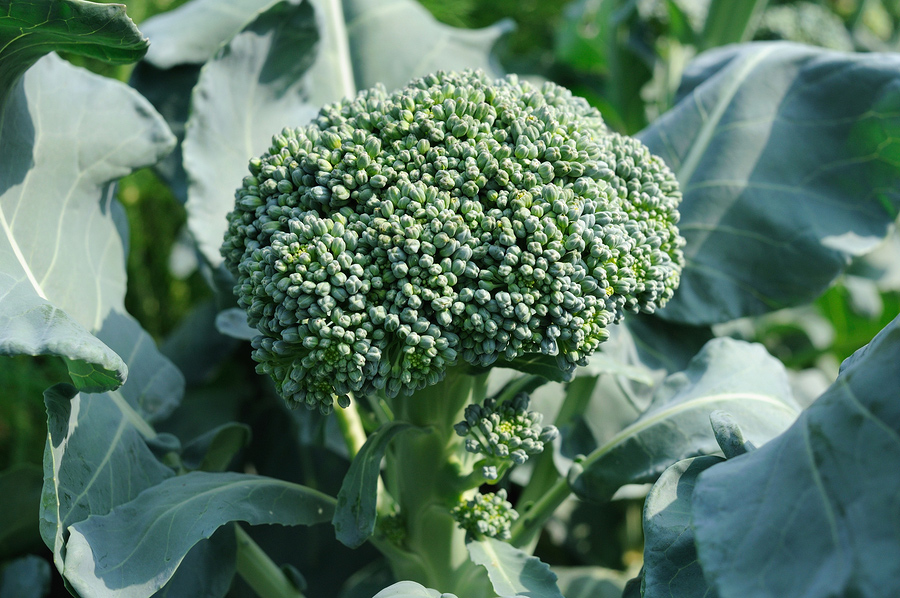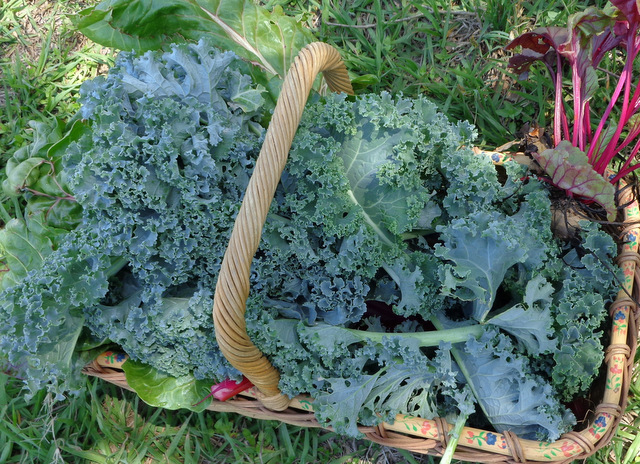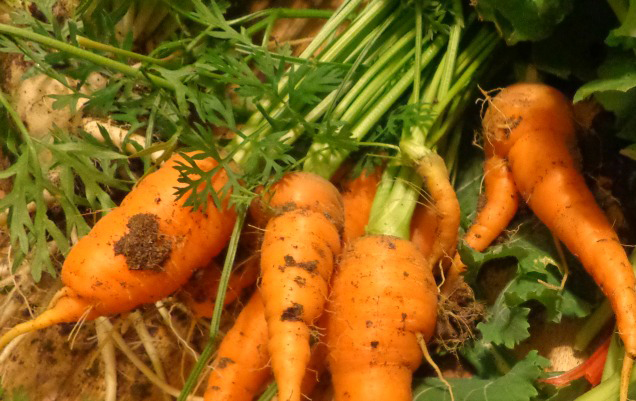Even though the days may still be warm in the South, they’re getting a little shorter with each passing day. Winter will be here in the blink of an eye!
For some people, fall means the end of gardening for a while… but don’t take that break just yet. There are still some crops that you can plant and harvest well into fall.
In addition, a fall vegetable garden offers some of the most tasty, long-lasting, and easily stored and preserved foods the garden has to offer. Don’t miss out on Fall’s Bounty!
Planning Your Fall Vegetable Garden
5 Tips for Planting Cool Season Crops
#1 – Find Your Average Date for First Frost
Of course, the first frost can come before or after this date, but knowing the average date will help you plan your fall garden. You can find the average frost dates for your area by entering your zip code here: Frost Dates by Zip Code.
#2 – When You Know Your Average First Frost Date, Count Backwards to Today
How many days do you have? This will help you determine what you still have time to plant.
#3 – Pick Plant Varieties that Have a Short Time to Harvest
A shorter time to harvest means that you are more likely to actually harvest your veggies. So if you have a choice between carrots that take 75 days and carrots that take 60 days, pick the 60-day carrots.
#4 – Remember that Some Plants Actually Like the Cold Weather
Unless you live in the far south, you probably don’t have enough warm weather left to plant tomatoes or watermelons because those plants love the heat. But almost everyone can plant lettuce, kale, broccoli, carrots, and leeks for cool season production.
#5 – Water, Water, Water
Depending on where you live, it’s likely still quite warm when you sow your seeds for a fall garden. That means you’ll need to be very diligent to water often (probably daily) until the seeds germinate and then water the seedlings regularly so the don’t burn up.
Read more: A Cheap and Easy Way to Extend Your Growing Season
The 5 Best Veggies for Cool Season Production
- Spinach really hates the heat, so fall is a great time to plant it. It’s cold hardy to 15F. If it snows or frosts, the edges of the leaves might get burned but you can just cut those parts away when you prepare the spinach.
- Kale is the rock star of my fall garden. It can tolerate temperatures all the way up to 100F and yet it is cold tolerant to 10F, which means that kale can be grown year-round in many climates.
- Broccoli takes a little longer to mature than spinach or kale, so you’ll want to start it as soon as possible. Broccoli is cold hardy to 26F and can withstand some frost.
- Carrots actually taste better after a frost. If you live where it snows, the green tops will probably die back, but as long as the ground doesn’t freeze you can mulch the carrots with straw or leaves and pick them all season long.
- Leeks can also be mulched with about 18″ of straw and harvested all winter, which makes for a great addition to winter soups and stews.
There are plenty more herbs that thrive in the Fall vegetable garden. Herbs like rosemary, thyme, cilantro, sage, orgon, parsley, chives, dill, chamomile… the list goes on and on! So, get your hands dirty and start planting today!
Read more: Growing Cole Crops – Broccoli, Cauliflower, Cabbage, and More
More “Food for Thought” for Your Fall Garden
There are plenty of other plants that also deserve a spot in the fall garden but won’t produce all season long. Lettuce is easy to grow, and you can harvest it really early, however, it’s more tender than spinach and will die when the frosts and snow come.
Onions and garlic should also be planted in the fall and covered with straw or leaves as mulch. They grow slowly all winter and then take off in the spring and will be ready to harvest early next summer.
What are your favorite crops for cool season production? Use the comments below to share with the group!
Honey Rowland is a homeschooling mother of 3 kiddos. She and her hubby Ben use Montessori, Waldorf, and Attachment Parenting methods. They live together on their mini organic farm, raising vegetables, goats, American Guinea Hogs, a big mix of heritage breed chickens and a few Great Pyrenees Livestock Guardians. She lives a hands-on learning lifestyle, and you can learn more at Honey’s Life.











COMMENTS(5)
Thanks for the info on fall gardens. My summer garden was a complete bust here in northern Florida, just too hot! Looking forward to trying a fall garden! Thanks again Honey!
What a wonderful post. Up here in the great white north, the shoulder seasons are critical.
In our community garden, my husband and I are in chronic teaching mode.
Rotational planting, seed saving and year round gardening are a big part of that.
We are lucky to have a long enough season for a second bean crop.
Because the plants are bigger, the second crop on the plants is bigger.
The critical thing is to keep them off the ground, water at the roots and pick off any yellow dead leaves.
Plant a fall crop of chard, it will sprout from the stumps in spring.
Giving you a cue to plant new seeds 6″ beside the old plants.
They older ones protect the new plants, you get a great feed of spring greens before they go to seed.
I keep one for seed and pull the rest about 2 weeks before the next crop comes.
Like you mentioned, the same works for carrots, turnups, beets.
I have a wonderful landrace leaf and romaine lettuce that I seed just before it snows.
Again… It comes up through the snow in spring. Pick the leaves and leave the plant to seed.
Kale and Brussels sprouts, cabbage and broccoli can all be harvested through the snow.
All the leaves taste like brassica…chop fine and they make incredible slaw.
Radish leaves taste like radish…who needs to wait for bulbs?
I find the actual “fruit” to be a secondary bonus to the leaves.
Chickens absolutely adore most of the leaves too.
Broccoli florets and bulb crops are actually triggered to form by shortening daylight hours.
Now.. Tomatoes… One year I had a massive cherry tomato plant.
It was loaded with green tomatoes and a hard frost was coming that night.
So I took a 5 gallon bucket out to the garden, cut a spade straight down through the roots,
Lifted out about a 2 gallon clump of dirt and roots, plunked it in the bucket and watered well.
Put it in my sunroom. It pouted for about 2 days, then I had cherry tomatoes into February.
The next year I got a small paintbrush to pollinate the flowers and they kept coming through April.
And of course we pick the rest of the green tomatoes. I put them in boxes up the stairs.
It is cool and darker there so they ripen slower without losing moisture.
Every morning I take sandwich zip locks and put most of the ripened ones into them.
Stack them up in the corner of the freezer, dip in hot water and slip the skin before using.
So I have fresh into late November, cherry tomatoes after that.
Fresh from the garden is wonderful, but We plant some deliberately late for the green crop.
You know those spindly cheap end of the season plants at nursery close outs?
Put them in the bottom quarter of a bucket, add dirt to it’s ears and plant a stake along side.
Or add a tomato cage… It makes a lovely house plant in the window.
I plant most of my garden cherry tomatoes in buckets now.
Hose any bugs off before bringing in and sprinkle the dirt with diatomaceous earth.
All I can think of right now… Thanks for the timely reminder to us all.
S’cuse me…I gotta go drag out my seed box. Grin
Thanks for the great post, Honey! And yes, you can definitely tell there are not a lot of hot summer days left. Thanks for mentioning kale – it’s definitely my all-time favorite fall plant, as you’ve described so well why it’s perfect for the season.
What a great article! I’m planting broccoli, and I will share my experience
Broccoli seedlings should be planted 10 weeks before the first frost date in your area. This means planting them during the last hot summer days so it’s important to mulch around them to help keep the ground cool and moist. Feed the plants 3 weeks after transplanting into the garden. Use a low nitrogen fertilizer. 70 days to maturity.